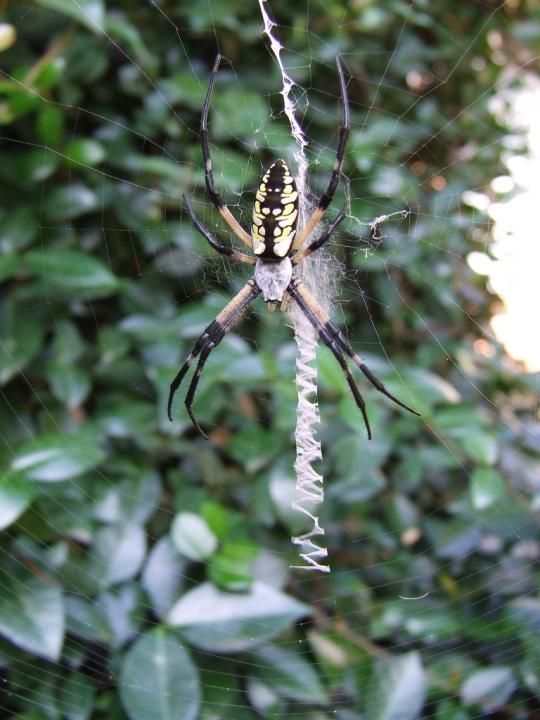|
|
Spider Web
|
Males of the genus Tidarren amputate one of their palps before maturation and enter adult life with one palp only. The palps are 20% of male's body mass in this species, and detaching one of the two improves mobility. In the Yemeni species Tidarren argo, the remaining palp is then torn off by the female. The separated palp remains attached to the female's epigynum for about four hours and apparently continues to function independently. In the meantime the female feeds on the palpless male. In over 60% of cases the female of the Australian redback spider kills and eats the male after it inserts its second palp into the female's genital opening; in fact the males co-operate by trying to impale themselves on the females' fangs. Observation shows that most male redbacks never get an opportunity to mate, and the "lucky" ones increase the likely number of offspring by ensuring that the females are well-fed. However males of most species survive a few matings, limited mainly by their short life spans. Some even live for a while in their mates' webs.
Females lay up to 3,000 eggs in one or more silk egg sacs, which maintain a fairly constant humidity level. In some species the females die afterwards, but females of other species protect the sacs by attaching them to their webs, hiding them in nests, carrying them in the chelicerae or attaching them to the spinnerets and dragging them along.
Baby spiders pass all their larval stages inside the egg and hatch as spiderlings, very small and sexually immature but similar in shape to adults. Some spiders care for their young, for example a wolf spider's brood cling to rough bristles on the mother's back, and females of some species respond to the "begging" behaviour of their young by giving them their prey, provided it is no longer struggling, or even regurgitate food.
Like other arthropods, spiders have to molt to grow as their cuticle ("skin") cannot stretch. In some species males mate with newly molted females, which are too weak to be dangerous to the males. Most spiders live for only one to two years, although some tarantulas can live in captivity for over 20 years.
|
|









